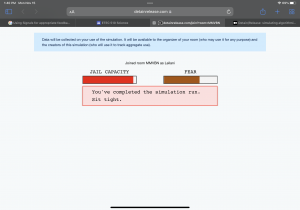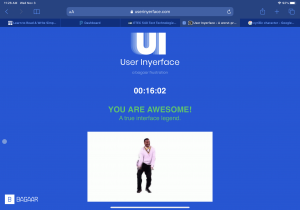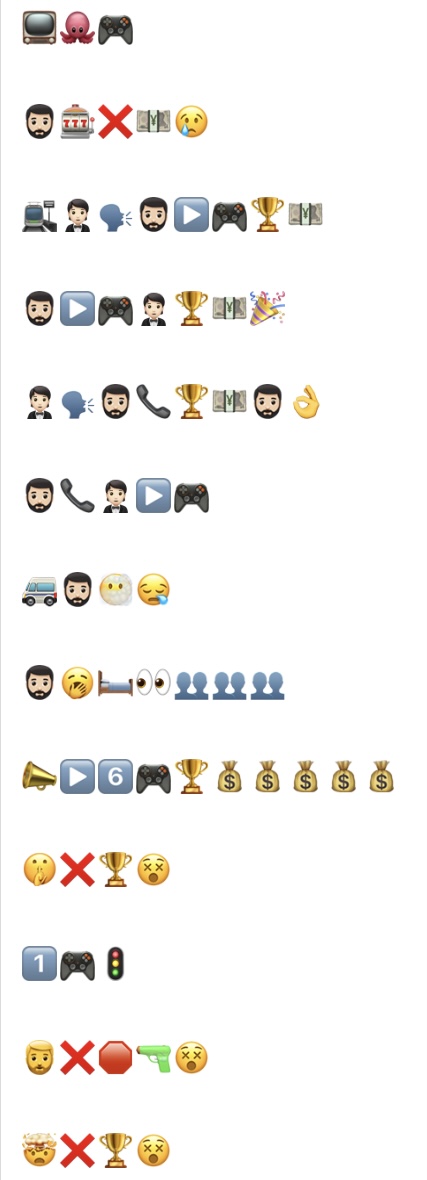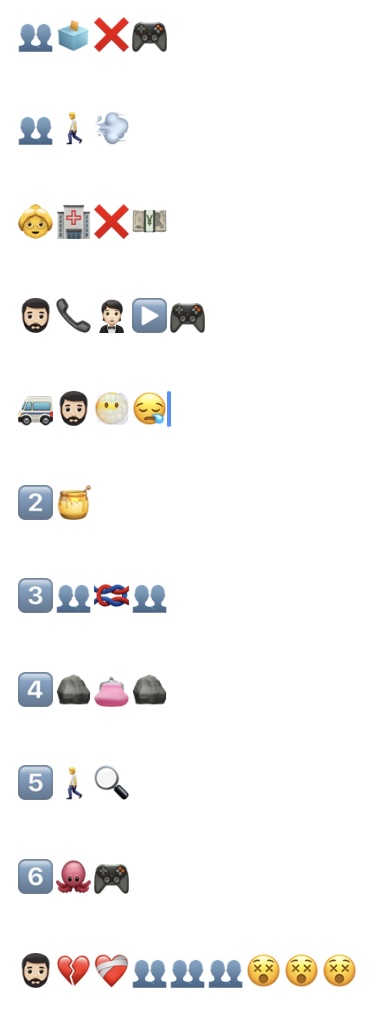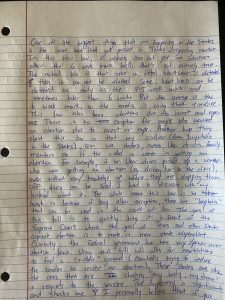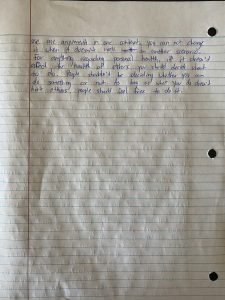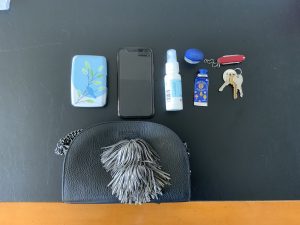Speculative Future #1:
https://view.genial.ly/619423e950419a0d7f199cb3/interactive-image-speculative-future-1
In the year 2035, the crisis of overpopulation has take a greater toll on both the environment and society. Frequent shortages of food, shelter, and resources are making living conditions far worse than ever before with many families struggling to survive and succeed in this day of age. The World Health Organization (WHO) and United Nations (UN) had emergency meetings in order to figure out a solution that will reduce the issues of overpopulation across the globe. There were many ethical debates of sterilization, human nature, and the right to have a family. However, many knew of the dire situation that the globe was in. There was not enough resources for everyone to have the right to reproduce. It decision was either let the human population continue to do what they did and have Earth be inhabitable in the next few decades or find a harsh solution that will save Earth. There needed to be a drastic rule to ensure the survival of humanity and a better world for the future children. WHO and the UN came to a conclusion that all parties agreed with. Everyone in the world will be injected with a chip that contains all their personal data including: financial status, career, education, health, family history, political views, social media use, personality, and references. The information can be updated in real time through a central database that is tied to the government. Since the chip flows through the blood, it cannot be taken out once injected. This chip is also able to detect whether someone is pregnant or not by using the hormone levels as an indicator. Each government has created a new law where in order to produce a child, parent(s) will be required to apply for a permit. To apply for this permit, parent(s) will need to go online to their government site and apply. The government will use the data on their chip and put in into an algorithm that will decide whether to approve of the permit of not. The algorithm is trained to determine the likely hood of the child being successful and being a contributing member to society. If the chip detects that someone is pregnant without a permit, the chip is able to release medicine that will induce an abortion. If the initial medicine fails, there is a GPS tracker on the chip that will enable government entities to find the person(s) and perform a procedure.
Lucy was in high school when this law was implemented and knew from then she wanted a child. Now, in the year 2051, she is an adult who wants to have a child with her partner Brent. Lucy worked very hard to ensure that she increased the chance of the algorithm approving of her permit. She attended the best school in her area, has a well-paying job, a great genetic history, clean social media, and grew up in a good family. She volunteered for great causes and donated money whenever she could. She showcased her good deeds as much as possible in order to increase the chances of her good deeds being noticed. Brent is also the same. They worked very hard in order to increase their odds as they have some of their friends got denied a permit, even though they thought they were qualified to be parents. The process of waiting for the approval of the permit was stressful. The qualifications were never made clear. It appeared that it was entirely up to the AI to decide whether to approve or not. A few weeks go by and finally Lucy and Brent get a notification.
They were denied.
Lucy and Brent were devastated. They did everything that was “right.” What could be the possible reason for this decision? Was it their social media use? Was it their careers? Was it their race? The media told people that the AI was non bias in terms of race and sexual orientation. What could they do to improve the chance of approval in their next application? The main focus of the AI was to ensure the child will live in a supportive household and grow up to be a contributing member to society in a positive manner. With all this in mind, why were they denied?
Speculative Future #2
https://view.genial.ly/619426abc5d9760d8b0e9fe0/interactive-image-speculative-future-2
In the year 2020 due to the Covid pandemic, online and hybrid learning was taking off across the board. Teachers noticed that those students who use to not excel in face-to-face (F2F) learning were excelling, while some students who excelled before were now struggling. There was another group of students who still had the same performance level in either mode. Researchers were researching on this phenomenon and started to look into the characteristics of what makes one excel in online learning versus F2F. What is the difference in personality traits and learning styles? What factors affected this?
With the popularity of online learning, researchers, educators, and the government worked together to train an AI to decide what mode of learning students should be taking starting from the beginning of high school. Three options were provided for students: online, hybrid, and F2F. All involved entities decided to train the AI using data points such as: grades, students behaviour, IEP’s, personality, work ethic, learning goals, and teacher comments. With these data points, the AI will determine which mode of learning the student will be in for the year. Each year, the AI will use new intel to determine whether the student will stick with their past mode or be switched to a new one. The goal of this to maximize learning potential in a student. This would likely help governments cater resources to the needed areas. Those who needs more help would get more through F2F, while those who were more independent would be able to achieve more independence in online/hybrid modes.
It’s the year 2042, and Isabella is just starting high school. She has heard about how the pandemic changed how students received their education. She was hopeful that she would start the new school year learning F2F. She enjoyed how elementary school was taught and loved the interactions with her peers and teacher. Two weeks before the start of school, she was notified of her results. It was determined that she would be starting her first year of high school online. Isabella was not very happy with the results as she felt that the AI failed to consider her social personality. All her friends got F2F, which meant that she would not be with them for the school year. However, she had no choice but to follow through with it. Though initially she hated the thought of not attending class in person, by the end of the first term, she was happy with progress. She was achieving her learning goals and performing well! She was able to make friends online and developed a strong friendship with them. They would meet up with each other whenever they could. With her first year of high school done, the AI used the new data to access students again. Two weeks before her second year of high school, Isabella got her results… F2F. She was shocked as to the change in mode of learning. Her performance was the same as before high school, so why did she have to attend F2F? The new friends she made had a mix of hybrid and online. However, she did not want to judge her results as she had a good experience with her previous one even though she was sceptical at first. With an open mind, Isabella started the new school year F2F. As it turns out, the AI was once again, correct in the decision made. Isabella began to question whether the AI knew her better than she knew herself. She honestly thought that she would know herself more, but clearly not. Is the AI collecting more data than what is being told to them? Is the government not being transparent? Or has the AI received enough data from various data sources that it is almost fool proof? Whatever it may be, it is clear to Isabella that something was being done right.

